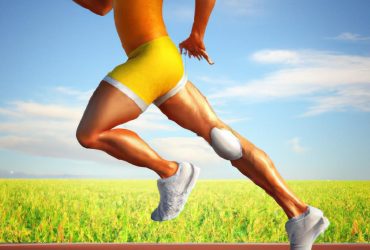As the world gradually emerges from the shadows of the COVID-19 pandemic, many individuals are eager to reclaim their active lifestyles, dusting off their running shoes and hitting the pavement once more. However, the lingering question of safety continues to loom large: should you wear a mask while exercising? As we navigate this new landscape of health and wellness, understanding the balance between personal safety and the pursuit of fitness is more critical than ever. This article will explore the nuances of mask-wearing during exercise, examining the latest scientific insights, expert recommendations, and the personal experiences of runners navigating their routes in a changed world. Whether you’re a seasoned marathoner or just beginning your jogging journey, join us as we delve into the considerations surrounding this essential topic, ensuring that your stride remains both strong and safe.
Assessing Risk and Benefits of Mask Usage During Exercise
While the decision to wear a mask during exercise is informed by personal comfort, local guidelines, and health considerations, assessing the risks and benefits associated with this practice can help individuals make an informed choice. Among the benefits are:
- Reduced Transmission Risk: Wearing a mask can significantly lower the chance of viral spread, protecting both the wearer and those around them.
- Community Responsibility: Mask usage reflects commitment to the wellbeing of the broader community, fostering a safer environment for all.
However, the practice does come with certain risks, particularly during vigorous physical activity:
- Breathability Issues: Masks may impede airflow, leading to discomfort or even shortness of breath in some individuals.
- Increased Heat: Wearing a mask can retain heat and moisture, possibly leading to overheating during intense workouts.
To navigate these complexities, individuals should consider factors such as exercise intensity, duration, and personal health conditions. It’s essential to stay vigilant, and if wearing a mask becomes overwhelming, safely remove it in low-density areas where the risk of transmission is minimized.
| Considerations | Mask Required | No Mask Needed |
|---|---|---|
| High Density Areas | Yes | No |
| Low Density Areas | Optional | Recommended |
| High Intensity Workouts | Consider Breathability | Preferably No |
weighing these risks and benefits will empower individuals to make thoughtful choices while staying active in the changing landscape of public health.
Guidelines for Safe Running Practices in a Post-Pandemic World
As you lace up your running shoes and hit the pavement in a post-pandemic world, it’s essential to prioritize safety while enjoying your workout. Here are some key considerations to keep in mind:
- Mask Usage: Depending on local health guidelines, you may choose to wear a mask while running, especially in crowded areas. Opt for breathable fabrics to enhance comfort.
- Social Distancing: Maintain a distance of at least 6 feet from others when possible. This helps reduce the risk of virus transmission.
- Choose Open Spaces: Favor parks or less populated trails over crowded city routes to minimize exposure.
- Hygiene Practices: Carry hand sanitizer and use it after touching surfaces, especially if you’re using public facilities.
- Self-Monitoring: Listen to your body; if you feel unwell, skip the run and rest.
| Safety Tip | Recommended Action |
|---|---|
| Mask Compliance | Wear one where mandated or at crowded events. |
| Group Runs | Consider virtual options or small groups. |
| Post-Run Care | Shower and change clothes promptly after running. |
The Conclusion
the decision to wear a mask while exercising during the COVID-19 pandemic is a nuanced one, influenced by personal comfort, local regulations, and the prevailing health guidelines. It’s important to remember that safety and well-being should always take precedence, whether you’re sprinting on the track or jogging through your neighborhood. As we continue to navigate this unprecedented time, consider your surroundings, listen to your body, and respect the choices of others. Ultimately, running is about freedom—freedom to move, to breathe, and to thrive—so find what works for you while ensuring the safety of yourself and those around you. Keep putting one foot in front of the other, and together, let’s embrace a healthy future, one stride at a time.








Leave a Reply